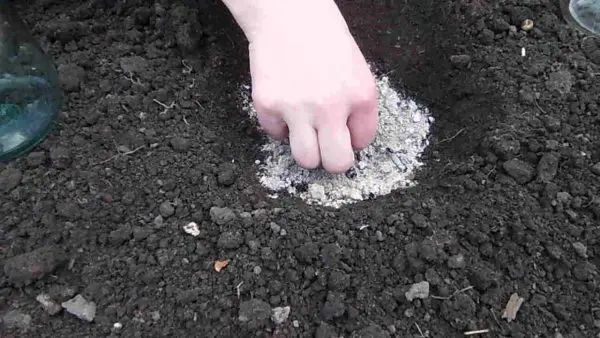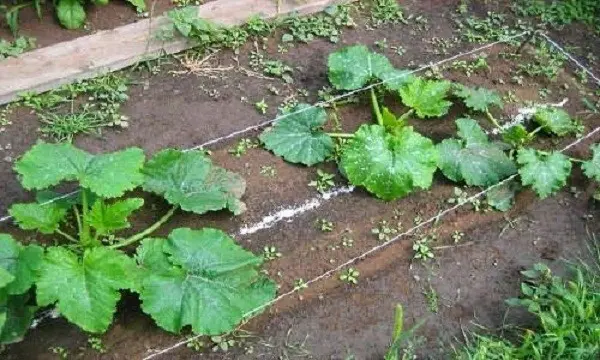Contents


Growing any plant, it is important to know how to properly feed it, what fertilizer suits it best during rooting, flowering and fruiting. Zucchini is no exception, because with the right fertilizer, they will show the best results in growth. In the selection of the correct feeding scheme, zucchini growing in open ground is especially needed, as they are more susceptible to external weather conditions.
When to fertilize
During the growth of zucchini, plants need to be fed three times, at different stages of maturation. The first time it is worth fertilizing plants planted in open ground, even before flowering begins. To do this, mix a half-liter jar of mullein and 1 tablespoon of nitrophoska. Nitrophoska can be replaced with Rossa. Dilute the resulting mixture in one bucket of water at the rate of 1 liter of the mixture per plant.

The second time the zucchini needs to be fed when the first flowers appeared. To do this, use a solution of “Effekton” and wood ash with the same calculation of the volume per plant. For the third time, fertilizers are applied to the soil during fruiting. In a bucket of water, you can dilute 2 tablespoons of nitrophoska or 3 tablespoons of Effekton-O fertilizer. This solution is used in a volume of 2 liters per plant.
As you can see, the most abundant feeding is done during growth, even before your crop has given color. This helps the plant develop quickly and correctly, saturating it with all the necessary substances for a future rich harvest. It is also worth remembering that when growing zucchini in open ground, it is important to take into account the characteristics of the soil. So, for peat soils, it is important to add humus or compost and add loam to the soil in order to adjust the acidity and consistency of the beds. If your soil is clay, on the contrary, peat should be added to it. Sandy soils require the addition of sod and peat to ensure that the zucchini gets all the nutrients it needs, which are lacking in sand.
Video “How to use ash to fertilize zucchini”
Informative video with recommendations for gardeners on the use of ash as a fertilizer for zucchini.
What fertilizer to use
A big plus of growing zucchini outdoors is the abundance and variety of fertilizers that can be used. Of course, you need to choose fertilizer based on the soil composition of the site, but at the same time, the unpretentiousness of the plants themselves also plays a significant role.

For weekly foliar feeding, you can use a mineral cocktail consisting of: 30 g of superphosphate and 1 g of boric acid dissolved in 10 liters of water. With this mixture, you can water the ground around the beds or spray the leaves, which helps to strengthen the vegetable’s immunity against diseases and garden pests. The first top dressing after transplanting zucchini must necessarily contain superphosphates and ammonium nitrate in order to provide the plant with the strength to build green mass. The stronger the bush grows, the more fruits it can bear and the better their quality will be. You can also use a nitrogen fertilizer to kick start your gardening. In subsequent top dressing, it is better not to apply this kind of fertilizer so as not to overfeed the crop. The fact is that a set of green mass is effective only up to a certain point, with the beginning of flowering, the vegetable should concentrate on the formation of flowers and pollen, and not the violent growth of leaves and stems.
During the formation of flowers, phosphorus, potassium and magnesium are more useful to the vegetable to compensate for the consumption of vital juices. You can also use organic fertilizers – mullein infusion for watering, bird droppings for mulching and foliar feeding. There is an increase in inflorescences and further fruits when using a yeast solution or sourdough. To make pollination go better and more efficiently, you can use a mixture of sugar and dry yeast – it will attract the attention of insects.

During the formation of fruits, it is important not to let the plants wither from overexpenditure, so it is worth using double superphosphate, urea and potassium. They can be applied as a liquid fertilizer or mixed with the soil while loosening the soil, followed by watering. If you do not like to mix different mineral and organic components yourself, you can always use ready-made mixtures. For foliar top dressing during fruit ripening, you can use the preparations “Rossa”, “Buton”, “Agricola-5”. When growing vegetables from the pumpkin family in the open field, it is important to remember that they are susceptible to various kinds of fungal diseases, so it is impossible to completely refuse top dressing. It should be borne in mind that overfed plants also remain at risk.
Video “Soil fertilization when planting zucchini”
Demonstrative video with instructions for fertilizing the soil when planting zucchini.
Author: Svetlana Galitsina
Loading…









